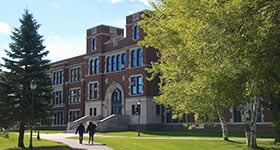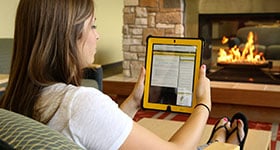Gifted students are commonly misunderstood as students without special learning needs. In reality, talented students are just as likely to have a special need or learning disability as any other student. In other words, students with a learning disability and special needs may just as well be gifted.
Students who exhibit the characteristics of both gifted students and students with unique needs or learning disabilities are known twice-exceptional students, or “2e students.” Given the complex nature of 2e students and their needs, their characteristics can be complicated, and they often go undetected in the mainstream classroom setting.
Through the Master of Science in Education – Special Education online program from the University of Wisconsin-Superior, graduates will learn the special education skills required to differentiate 2e students from others and give them necessary support. The more educators learn about and identify 2e students, the more they can identify and accommodate them in the classroom setting and create a successful classroom experience.
Just as the gifted skills and traits of 2e learners vary, so can their special needs. According to the National Association for Gifted Children, potential disabilities for 2e students include “specific learning disabilities (SpLD), speech and language disorders, emotional and behavioral disorders, physical disabilities and the autism spectrum,” among others. Given the spectrum of both talents and disabilities, the needs of 2e learners will also be vast and varied.
The first step to supporting any twice-exceptional student is identifying them. That is not easy, but the Child Mind Institute writes that it starts with making both teachers and parents aware of the term. Educators who are familiar with twice-exceptionality should try to educate and normalize the concept with parents and colleagues when possible in order to have more people in a student’s life looking out for the traits of a 2e learner.
The Journal of Special Education Apprenticeship discusses five strategies for effectively supporting 2e students:
1. First, Recognize the Strengths of 2e Students
This means creating avenues for students to engage with content in ways that cater to their strengths, which helps them understand and build confidence. Giving students multiple ways to engage with content is a good way for students to feel more comfortable with their learning styles. For example, a student who is dyslexic but gifted in math might problem-solve or show their work differently. Special educators can engage these students in ways that play to their strengths and cultivate their talents.
Another simple way to empower students is by finding areas where they can make their own choices as part of the lesson.
2. Assess 2e Students’ Needs
Emphasizing students’ strengths is a critical starting point, and educators should reinforce that practice by creating a learning environment that addresses 2e students’ needs. This process could mean providing alternative lesson formats or additional materials showing how new lessons fit into old ones. For many students, particularly those with attention-deficit or hyperactivity issues, instilling organizational skills can be hugely beneficial.
3. Focus on 2e Students’ Social-Emotional Needs
Social-emotional teaching is doubly essential for students who already might struggle to fit into the mainstream classroom. Teaching and reminding students of stress management techniques can be a good way to help manage stressful situations, as well as self-advocacy with teachers and other students. Adjustments such as additional time or more spacious seating arrangements can also help alleviate students’ anxiety.
4. Differentiate Between 2e Students and Gifted Underachievers
Testing is the most effective and surefire way to tell the difference between 2e students and gifted underachievers. One possible method of identification for 2e students, the Child Mind Institute notes, is when a student performs “just okay” in most areas but is a “prodigy” in one area, or that student performs exceptionally well in all areas except one where they struggle significantly.
5. Use Collaboration and Communication to Support 2e Students
Getting everyone involved with a 2e student’s education to have the same expectations and understanding is important. Allowing the appropriate support personnel to lead is often a good way to utilize their expertise. No matter the case, finding a special curriculum that balances challenge with remediation is important for every student.
An advanced education degree in special education can equip professionals with the necessary knowledge and strategies to help all students in the classroom, including those with exceptionalities and disabilities.
Learn more about the University of Wisconsin Superior’s Master of Science in Education – Special Education online program.


